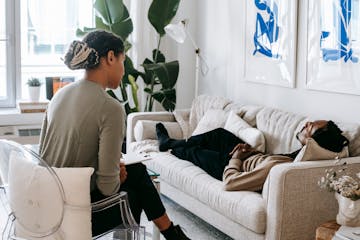Shopping addiction, also known as oniomania, is a psychological disorder in which a person experiences an uncontrollable urge to buy things, despite the negative consequences that this may have on their life. This condition can affect people of all ages and genders, and can have a significant impact on the mental health, interpersonal relationships, and financial situation of the sufferer.
Symptoms of shopping addiction
Shopping addiction is characterized by a series of symptoms that can manifest differently in each individual. Some of the most common signs of this disorder include:
1. Compulsive Shopping
People who are addicted to shopping often experience an uncontrollable urge to buy things, even when they don't need them. This compulsive behavior can lead to the accumulation of unnecessary objects and debt.
2. Feelings of guilt or regret after buying
After a compulsive purchase, it is common for a person to experience feelings of guilt, regret or anxiety. Despite this, the feeling of relief they experience when purchasing a new item can lead them to repeat the compulsive buying cycle.
3. Hide or minimize purchases
Shoppers often hide or minimize the amount of money they spend on purchases. They may even lie about their expenses or hide their purchases from family and friends.
4. Prioritize shopping over other responsibilities
People with shopping addiction may neglect other areas of their lives, such as work, personal relationships, or health, in order to satisfy their need to shop. This can cause conflicts and problems in different aspects of your life.
Causes of shopping addiction
Shopping addiction can have multiple causes, ranging from psychological factors and emotional to social and cultural influences. Some of the factors that may contribute to the development of this disorder are:
1. Emotional disorders
People experiencing anxiety, depression, stress, or low self-esteem may turn to shopping as a form of escape or temporary relief. The act of shopping can generate a feeling of instant gratification and pleasure, which helps them cope with their negative emotions.
2. Social pressure
Advertising, marketing and social pressure can influence people's purchasing behavior, leading them to purchase products as a way to fit into certain social groups or satisfy external expectations.
p>
3. Trauma or stressful events
Past traumas or stressful events, such as the loss of a loved one, a breakup, or financial problems, can trigger compulsive buying behavior as a coping mechanism.
4. Models of learned behavior
The family and social environment in which a person develops can influence their purchasing patterns. If excessive consumption is promoted at home or the act of shopping is used as a way to show love or affection, it is likely that the person will adopt these behaviors.
Treatment of shopping addiction
Shopping addiction treatment can be a complex process that requires a comprehensive and personalized approach. Below are some strategies and therapies that may be useful in addressing this disorder:
1. Cognitive-behavioral therapy
Cognitive-behavioral therapy is one of the most used interventions in the treatment of shopping addiction. This therapeutic approach helps identify and modify the distorted thoughts and automatic behaviors that underpin compulsive buying behavior.
2. Group Therapy
Participating in group therapy sessions with other people who also suffer from shopping addiction can be beneficial. The support of a peer group and the opportunity to share experiences and coping strategies can help the person feel understood and motivated in their recovery process.
3. Family Therapy
In some cases, family therapy can be instrumental in the treatment of shopping addiction, especially if dysfunctional patterns in family dynamics that contribute to the problem are identified. Involving the family in the therapeutic process can strengthen interpersonal relationships and promote the individual's recovery.
4. Financial Counseling
Since shopping addiction is often associated with financial problems, financial counseling can be an important part of treatment. A specialized professional can help the person establish a budget, effectively manage their debts, and develop financial planning skills that prevent future relapses.
5. Medication
In some cases, medication may be prescribed to treat symptoms associated with shopping addiction, such as anxiety or depression. It is important that the prescription and monitoring of medication be carried out by a mental health professional, following a comprehensive approach that combines pharmacotherapy with other therapeutic interventions.
Key Takeaways
The Shopping addiction is a psychological disorder that can have a significant impact on the lives of people who suffer from it. It is important to identify the symptoms, understand the underlying causes, and seek professional help to overcome this addiction. With the right support and comprehensive treatment, it is possible to recover and learn to manage the impulse to buy compulsively in a healthy way.
Author: Psicólogo José Álvarez


